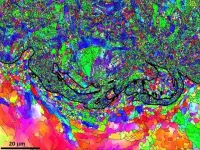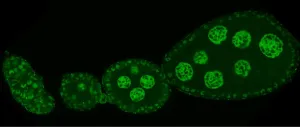International team first to stack virus resistance plus iron & zinc in a non-cereal crop
Project makes a major step closer to bringing improved varieties to farmers
2021-02-16
(Press-News.org) ST. LOUIS, MO, February 16, 2021 - Delivering the benefits of agricultural biotechnology to smallholder farmers requires that resources be directed toward staple food crops. To achieve effect at scale, beneficial traits must be integrated into multiple, elite farmer-preferred varieties with relevance across geographical regions. For the first time, an international team of scientists, led by Narayanan Narayanan, Ph.D., senior research scientist, and Nigel Taylor, Ph.D., associate member and Dorothy J. King Distinguished Investigator at the Donald Danforth Plant Science Center, and their collaborators in Nigeria, led by Ihuoma Okwuonu, Ph.D., of the National Root Crops Research Institute, in Umudike, Nigeria and the United States Department of Agriculture, have developed cassava displaying high-level resistance to cassava mosaic disease (CMD), cassava brown streak disease (CBSD) as well as higher levels of iron and zinc. This is the first time that disease resistance and multiple biofortification traits have been stacked in this manner in a non-cereal crop. The results of their research, Stacking disease resistance and mineral biofortification in cassava varieties to enhance yields and consumer health, were recently published in Plant Biotechnology Journal. Co-authors include Getu Beyene, Ph.D., Raj Deepika Chauhan, of the Danforth Center and Michael A. Grusak, Ph.D., of the USDA-ARS Red River Valley Agricultural Research Center in Fargo, ND.
The research builds on a 2019 paper, Biofortification of field-grown cassava by engineering expression of an iron transporter and ferritin, published in Nature Biotechnology, demonstrating that increasing the mineral content of cassava storage roots was possible. RNAi-mediated technology was used to achieve resistance to CBSD in two East African and two Nigerian farmer-preferred cultivars along with AtIRT1 (major iron transporter) and AtFER1 (ferritin) transgenes to achieve nutritionally significant levels of iron and zinc in cassava storage roots (145 and 40 μg/g dry weight, respectively). The inherent resistance to CMD was maintained in all four disease resistant and mineral enhanced cassava cultivars, demonstrating that this technique could be deployed across multiple farmer-preferred varieties to benefit the food and nutritional security of consumers in Africa.
Combining technologies was not easy. "Production of plants with disease and elevated mineral nutrition concentration was technically more challenging to produce than for disease alone," said Narayanan, who has been working on improving cassava for 15 years. "We had to make sure the minerals were accumulated in the storage root, not the stem or leaves, and at the right level for consumers. Too much accumulation is also a problem as this will kill the plant."
It is important to confirm that the higher mineral levels are retained during food processing and cooking so that better nutrition can actually reach the dinner plate and the digestive tract. The research team under the direction of Okwuonu, prepared gari and fufu. These two common West African foods required a four-day process involving chopping, soaking, fermenting, pressing and roasting of the cassava root. They found that high levels of iron and zinc were retained through cooking and remained available for absorption in the gut following digestion. Ultimately, the biofortified cassava could benefit health in cassava consuming populations by providing 40-50 percent of Estimated Average Requirements (EAR) for iron and 60-70 percent of EAR for zinc for children and women in West Africa.
"To see these results of using cutting-edge technology to improve an orphan crop was a big day for me," said Taylor. "Farmers that have cassava plants that are resistant to two incredibly destructive diseases with more minerals in every bite has the potential to improve the nutrition and health of millions of people in West Africa."
In an accompanying paper recently published in Global Food Security, Okwuonu and her coauthors present, Opportunities and challenges for biofortification of cassava to address iron and zinc deficiency in Nigeria. The country is the world's largest producer of cassava and it is critically important to the economy. Cassava's edible storage roots act as a critical staple food for more than 180 million Nigerians. Though high in caloric value, cassava roots are deficient in minerals, placing populations that rely on this crop at risk of "hidden hunger". Micronutrient deficiency presents a major public health issue and correlates with cassava consumption level across six-agro-ecological zones within Nigeria. Micronutrient deficiencies, especially iron and zinc, affect an estimated six million children under five years of age. Iron deficiency anemia affects their immune system, stunts growth and impairs cognitive development, while deficiency in zinc causes increased risk of death from diarrhea, stunting and reduced cognitive development. Co-lead authors on the paper are Narayanan N. Narayanan, Chiedozie N. Egesi, and Nigel J. Taylor.
"Developing a cassava variety with elevated levels of iron and zinc for consumption in Nigeria has the potential to ensure that the wider population of Nigerians dependent on cassava are indeed getting greater nutritional value in their diets," said Okwuonu.
Researchers in the VIRCA Plus project are conducting more field evaluations and assessments. Regulatory review will be needed before the improved cassava can be made available to farmers and consumers in the coming years.
INFORMATION:
The research was funded by the Bill & Melinda Gates Foundation OPP1152626, USDA Agricultural Research Service 08-3060-253 and the United States Agency for International Development as part of the Feed the Future, the U.S. Government's global food security initiative EDH-A-00-09-00010-00.
About VIRCA Plus
VIRCA Plus, a multi-institutional project working to improve resistance to viruses that cause cassava brown streak disease (CBSD) and to increase levels of iron and zinc in the storage roots, the edible part of the plant. VIRCA Plus collaborates with research scientists, regulatory experts and communication specialists with the National Agricultural Research Systems (NARS) in Kenya, Uganda, Nigeria and Rwanda.
About the Donald Danforth Plant Science Center
Founded in 1998, the Donald Danforth Plant Science Center is a not-for-profit research institute with a mission to improve the human condition through plant science. Research, education and outreach aim to have impact at the nexus of food security and the environment, and position the St. Louis region as a world center for plant science. The Center's work is funded through competitive grants from many sources, including the U.S. Agency for International Development, National Institutes of Health, U.S. Department of Energy, National Science Foundation, and the Bill & Melinda Gates Foundation. Follow us on Twitter at @DanforthCenter.
ELSE PRESS RELEASES FROM THIS DATE:
2021-02-16
For the first time, a research team led by Lund University in Sweden has mapped out exactly what happens when spruce bark beetles use their sense of smell to find trees and partners to reproduce with. The hope is that the results will lead to better pest control and protection of the forest in the future.
The Eurasian spruce bark beetle uses its sense of smell to locate trees and partners. The odours are captured via odorant receptors (proteins) in their antennae. Researchers have long understood the connection, but so far they have not known exactly which receptors bind to what pheromones. ...
2021-02-16
Scientists have discovered an essential protein in cholera-causing bacteria that allows them to adapt to changes in temperature, according to a study published today in eLife.
The protein, BipA, is conserved across bacterial species, which suggests it could hold the key to how other types of bacteria change their biology and growth to survive at suboptimal temperatures.
Vibrio cholerae (V. cholerae) is the bacteria responsible for the severe diarrhoeal disease cholera. As with other species, V. cholerae forms biofilms - communities of bacteria enclosed in a structure made up of sugars and proteins - to protect against predators and stress conditions. V. cholerae forms these biofilms both in their aquatic environment and in the human intestine. There is evidence to suggest that biofilm ...
2021-02-16
An international team of researchers has solved a puzzling phenomenon whereby strangely beautiful, vortex-like structures appear between materials deposited onto engineering components used in multiple settings - from space shuttles to household items and everyday transport vehicles.
The discovery may ultimately improve the efficiency of the "Cold Spray" (CS) deposition process from which these structures are formed - a not-insignificant consideration from a financial perspective, or from a functional one given that some of the materials created by CS are pushed to the limit in outer space.
The discovery is featured on the front cover of international journal, Materials & Design.
Cold Spray (CS) and deposition efficiency (DE)
CS enables the formation of coatings, ...
2021-02-16
Why do genes need to be silenced? The "genes" in question are in fact transposons, selfish genetic elements that seek to self-multiply at the host's expense and that need to be controlled. Julius Brennecke's group at IMBA focuses on lifting the mysteries of a specific type of transposon silencing, namely the piRNA pathway in animal gonads. Understanding this ancient silencing system promises to reveal general mechanistic principles of gene expression and chromatin biology.
Gene silencing: either before they "speak", or right as they attempt to
Heterochromatin, a tightly packed form of DNA, plays an essential role in transposon ...
2021-02-16
Many steep valleys in the European Alps show the relicts of large rockslides, during which several hundreds of million cubic metres of rocks get instable, collapse and impact everything on their path. "For most of these, we still do not know how they are caused, because these rockslides occurred long before the start of written history in the region about 1000 years ago," says Patrick Oswald, PhD student at the Department of Geology of the University of Innsbruck and lead author of the study. "Curiously, many of these ancient rockslides occurred together in clusters, meaning they are found in small regions and have a rather comparable age". This enigmatic pattern has puzzled researchers over the last decades and fuelled some intense debates. Some experts ...
2021-02-16
"Thin films are solid state substances that can be only several atomic layers thick. Usually, their properties are considerably different from the properties of the original substances on the macroscale. The areas of their application keep expanding and include nanoelectronics, optoelectronics, spintronics, electro-, and photocatalysis, as well as such important fields of economics as space technologies and instrument building. Micromodule devices for space crafts and medical technologies are also promising areas in which thin films can be used," said Vyacheslav Fominski, a project supervisor representing MEPhI.
To reduce friction and solve many ...
2021-02-16
Cataracts are the most common eye ailment in humans. However, the exact processes leading to this condition are not fully understood. A team of researchers headed by the Technical University of Munich (TUM) has now discovered that the composition of the protein solution plays a decisive role. Their conclusions are contrary to prevailing opinion in the field.
The cells in the lens consist of a highly concentrated protein solution that is normally clear. "When the balance of the proteins in the lens is destroyed, they clump together and the lens becomes cloudy," says Prof. Johannes Buchner of the Chair of Biotechnology at TUM. This results in the condition known as cataracts.
The clouding can have different causes. Because the proteins in the lens are formed ...
2021-02-16
The 'sloshing' of a quantum fluid comprised of light and matter reveals superfluid properties.
An Australian-led team of physicists have successfully created sloshing quantum liquids in a 'bucket' formed by containment lasers.
"These quantum fluids are expected to be as wavy as the oceans, but catching clear pictures of the waves is an experimental challenge," says lead author Dr Eliezer Estrecho.
Led by the Australian National University (ANU), the team serendipitously observed the wavy motion of the quantum fluid in an optically-controlled bucket, gaining new insights of the intriguing superfluid properties of this peculiar, hybrid light-matter system.
Superfluidity ...
2021-02-16
The processes in living beings follow a finely orchestrated choreography down to the molecular level. Rhythmic processes are found everywhere in biology, for example, the 24-hour circadian cycle, a kind of "internal clock", plays an important role in regulating many processes in living cells, including metabolism and cell division mechanisms.
Scientists from Saarbrücken and Kaiserslautern have now taken a closer look at a similar cycle, the somewhat shorter ultradian cycle of baker's yeast. Under the leadership of Bruce Morgan, Professor of Biochemistry at ...
2021-02-16
Combining healthy lifestyle interventions reduces heart disease through beneficial effects on different lipoproteins and associated cholesterols, according to a study published February 9 in eLife.
Having a healthy lifestyle has long been associated with a lower risk of developing heart disease. The new study provides more detailed information on how healthy lifestyles improve cholesterol, and suggests that combining cholesterol-lowering medications and lifestyle interventions may yield the greatest benefits to heart health.
Cholesterol-lowering ...
LAST 30 PRESS RELEASES:
[Press-News.org] International team first to stack virus resistance plus iron & zinc in a non-cereal crop
Project makes a major step closer to bringing improved varieties to farmers




